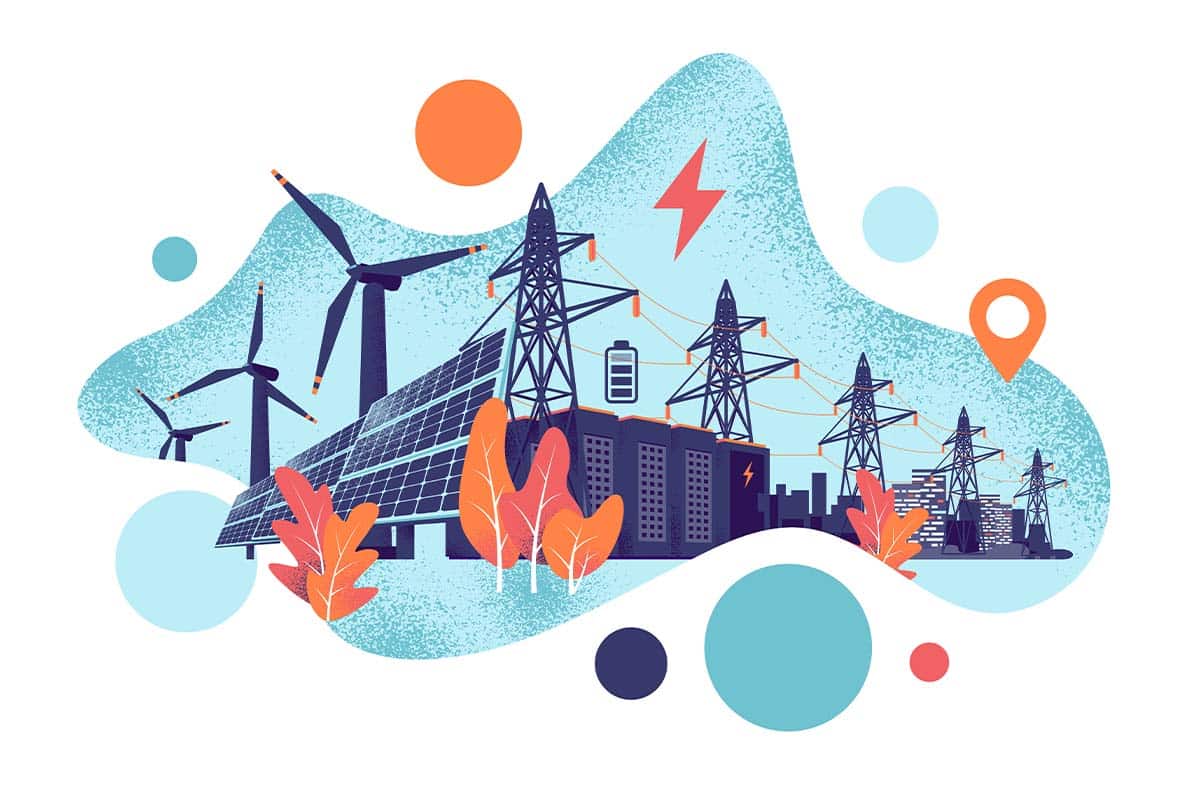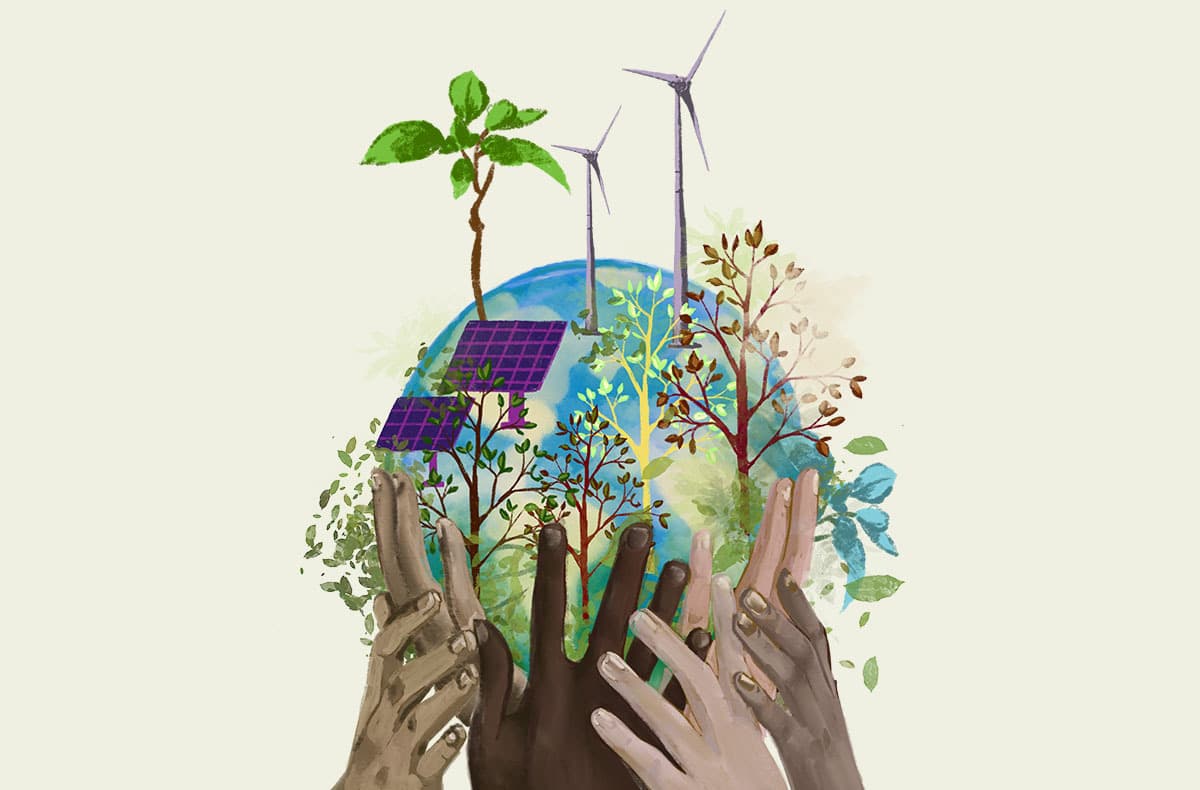
The old saw goes “work smart, not hard,” but unfortunately we are going to have to do both if we are to meet the goal of mass electrification that is essential to cutting carbon emissions—and saving the planet. Simply put, we cannot build out the grid fast enough: according to a Princeton study, the US will have to increase its capacity for electrical transmission by 60% by 2030 to meet our net-zero needs. To do so, we will need to work with what we have. The problem, of course, is that what we have was built to serve a world that no longer exists. If we’ve changed the fundamental production of energy, why should it have to fit the old world’s infrastructure? Rather, we must create a new infrastructure better suited to green energy production.
Currently, our entire industrial, societal structure is a product of our current fossil fuel energy paradigm. The dominant technology is dying and being replaced by variable renewable green energy. This means it is imperative to rethink that existing energy paradigm. We cannot force-fit or retrofit ourselves into a new grid that is large enough to meet our future needs. Rather, we need to change how we live to better meet electricity at its source.
Technology inevitably changes the way we live—everything from cars to lighting to social media have altered the fabric of society and how it is organized. While the human instinct is to try to preserve the old ways of doing things, new technology, once adapted, will overwhelm and remake our habits and interactions. Changing from fossil fuel to something with totally different characteristics inherently will impact the way we live our lives: we just need to look to the history of energy for cues.
Historically, our first paradigm centered on water power. In mills, a big water wheel would turn gears and shafts and other gears and shafts, allowing for the automation of processing and manufacturing. Of course, this is incredibly inefficient: a lot of energy gets lost in the shaft-turning process. As a result, these factories had to be small and located by running water, leading to the development of condensed industrial areas by American rivers and overdeveloped mill towns.
The next paradigm change came with the invention of the steam engine, which freed up industry from needing to be located near running water, but with urban centers established, we generally see most factories remaining in the same locales. These factories were still limited in size, as like mills, they still operated by turning shafts and wheels, transmitting mechanical energy from the engine to where people were working.
Then electricity came along, and with it modern industrial life. There was no longer a limitation to the size of factories, because electrical energy could travel efficiently over great distances. Unlike running water, which is geographically anchored, the fossil fuels that fired the steam engines that turned the dynamos that produced the electrical energy could be easily transported. Whether gas in pipelines or coal or oil shipped on trains, energy could travel anywhere, so massive factories could be built wherever products could get manufactured and distributed for the least amount of money. To minimize the costs, this meant factories sprang up anywhere with good access to labor and transportation to markets, including ports, rail hubs, airports and the intersections of major highways. With energy geographically freed, access to materials and transportation became the strongest drivers of industrial development.
The growth of today’s modern utility structure was dictated by economies of scale: the bigger the plants, the lower the cost of energy became. This, in turn, engendered monopolies to guarantee sufficient load to build bigger and bigger electric generating plants. And naturally, no one wanted to live next to a fume-belching power plant, which necessitated building these massive constructions away from population centers, and using wires to access the electricity they were generating. Essentially, under this fossil fuel-driven paradigm, we saw the proliferation of big plants far away from load that relied on massive networks of wires. Chances are, if we’d started with solar or wind instead of fossil fuels as our main source of energy, we’d have an entirely different infrastructure, regulatory regime and urban design.
Today, we’re facing another paradigm shift, this time away from fossil fuels to renewable energy. The problem is, these sources of energy—much like our original mills located near running water—are again geographically anchored. Rather than our current system of large plants with long wires far from load, we need to consider a new model that meets the specific parameters of sustainable energy. Solar and wind are abundant in the center of America, but would need to travel long and far to reach urban centers on the coasts.
And unlike fossil fuels, which can be shipped anywhere and stored relatively easily, electricity cannot be efficiently “saved” for later use since batteries are still ineffective for long-term energy storage, and it isn’t as easily transported without proper infrastructure. If we could snap our fingers and build out the grid immediately, we’d be fine—but we can’t. Renewable energy simply cannot get from its location in the heartlands to where we need it on the coasts without a time-consuming, expensive, massive upgrade of the grid. Fossil fuels could be transported via rail lines and pipelines: moving electricity from sustainable sources is considerably more challenging.
Even if we did have the resources and time to build copious new transmission lines, few Americans are eager to welcome such unsightly additions to their local landscapes. In his coverage of the renewable energy conundrum on Last Week Tonight, John Oliver referred to this as “the NIMBY mindset,” or “Not In My Back Yard.” States are resistant to building eyesore powerlines for the benefit of those living elsewhere. Just this November, Maine voters rejected the building of a $950M transmission line that would transmit hydropower from Canada to Americans further south.
With all the pushback against building new transmission lines, it’s also worth considering if it’s the wisest investment to make in the long run. Building far from the source might have suited us in our last paradigm, but in today’s reality, it creates significant security issues. The more space between energy source and load, the more opportunities for disruption arise. This is not a sound design in the face of increasingly frequent major weather events and attacks from bad actors. There’s a reason backup generators can be relied on in a pinch: you’ve got the source directly where you need it. Given climate change and cyberthreats, it makes more sense to have load closer to the source.
So we have renewable energy, but there’s no easy way to get it to where the majority of people live and work. What’s the solution? Rather than trying to maintain the way of life to which we’ve grown accustomed, it might be time for us to go “back to the future,” or return to a way of life where we lived closer to the source of the energy we use. To truly move away from fossil fuels to renewables with a geographic connection, we need to start thinking of moving ourselves closer to them.
This can be achieved in two ways. First, we need to see a lot more local energy, whether that means more people installing solar panels on their rooftops, or community solar farms. Second, instead of trying to figure out how to move the energy away from the center of the country to us, we should be moving to it, reindustrializing former farmland and encouraging development where green energy is plentiful.
Of course, building out close to the source is also time-consuming, but there is no easy fix to where we’ve found ourselves. What we cannot do is carry on living within a paradigm that no longer serves us, trying to make sustainable energy work in cities and industries that have been developed under a world that has ceased to exist. Continuing on with life as we know it is not just inefficient: it will doom us to not meeting dire goals. Thinking local is the one thing that will save our entire world.

